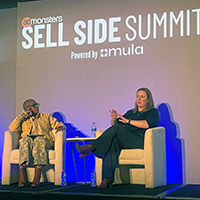Retailers still don’t get it.
Almost 60% fail to send a confirmation message after customers register for e-mail newsletters or marketing programs, according to a study by Silverpop.
And that means they are missing some big marketing opportunities.
For one thing, confirmation offers a chance “to introduce yourself, and tell them what to look for,” says Elaine O’Gorman, vice president of marketing for Silverpop. It also builds anticipation for the newsletter.
And confirmation can improve deliverability and remind subscribers to place you in their white list or address book. But to get these benefits, “you have to send it instantly, preferably within seconds,” O’Gorman adds. And how soon can the actual newsletter follow? “It can be as closely spaced as you’d like it to be” she says.
Should confirmations be personalized? O’Gorman notes that it’s “difficult to produce a confirmation message in seconds.” But she adds that a good vendor can easily do it.
(Another reason for letting the vendor handle it is so the “from” line will be the same for both the confirmation and the e-zine, she notes).
But a confirmation should be just that—it should not require the recipient to do anything.
“Double opt-in has been proven to result in a meaningful drop in completed registrations,” O’Gorman says. “The way to go is confirmed opt-in.”
Unfortunately, confirmation is not the only area in which retailers are lagging. Only 23% offer e-mail registration on their Web site home pages, and a similar percentage put it there as a “secondary call to action, less prominent than other calls to action,” O’Gorman says.
This means that these firms are missing a chance to sign up visitors for e-zines and marketing messages.
One piece of good news is that 63% of the retailers surveyed ask for more than the e-mail address during registration. Of course, the other third is “missing out on the ability to personalize and on the ability to target segments of their audience,” O’Gorman says.
What does that mean to e-zine publishers?
Simply that they should ask for data that will help them customize the newsletter for individuals. “If you have five articles in your newsletter, you can tailor two based on the data you receive,” O’Gorman explains. “The other three can be of general interest.”
She adds that personalization isn’t as much about greeting the reader by name as providing personal preferences.
Silverpop studied the Web sites of 175 companies that participated in last year’s ACC, including multi-channel players like Crate & Barrell, Neiman Marcus, JC Penney and CompUSA. Of this group, only 14% offer e-mail newsletters. But many of their sales and promotional e-mails make take the form of newsletters, O’Gorman notes.



